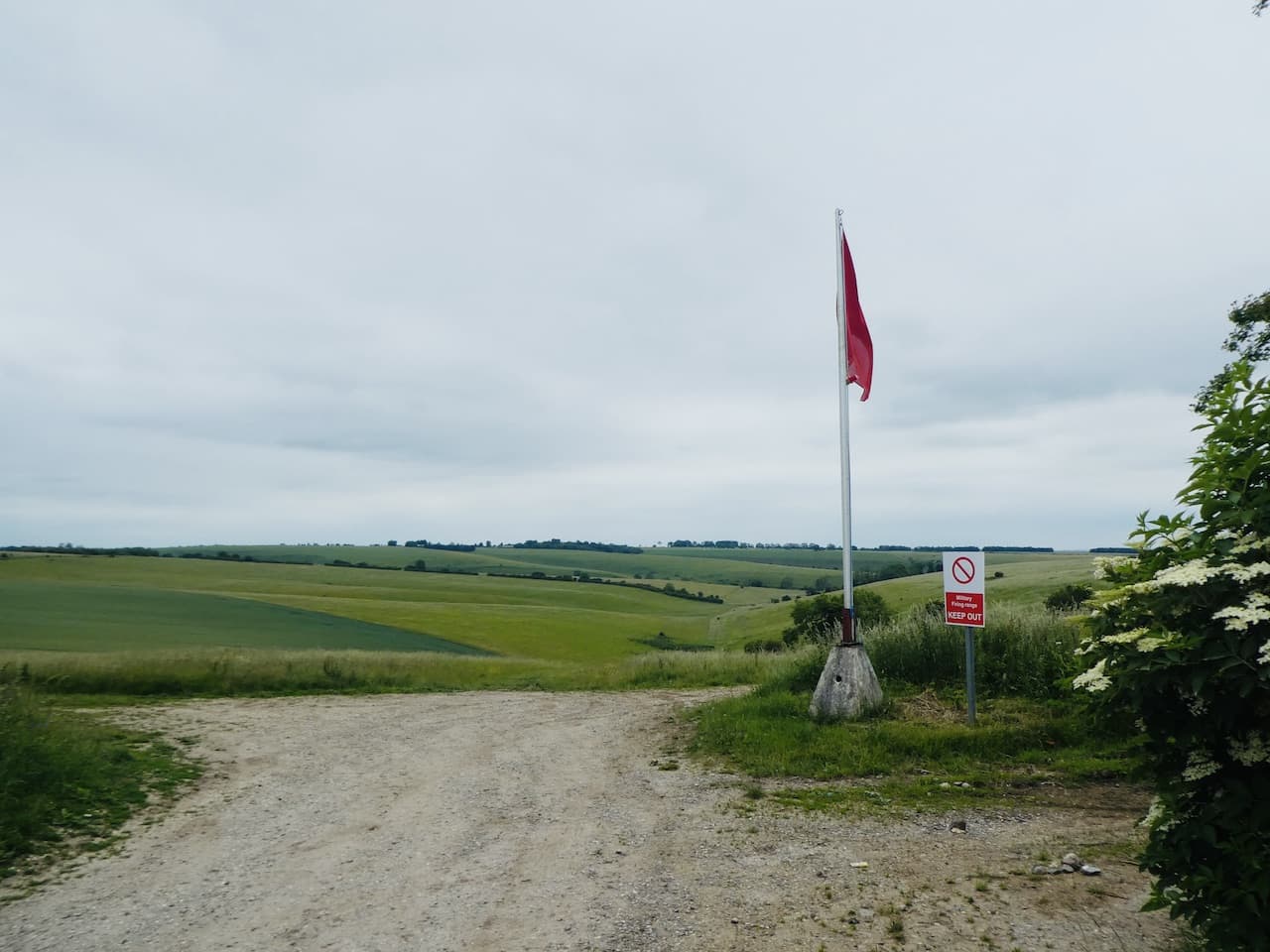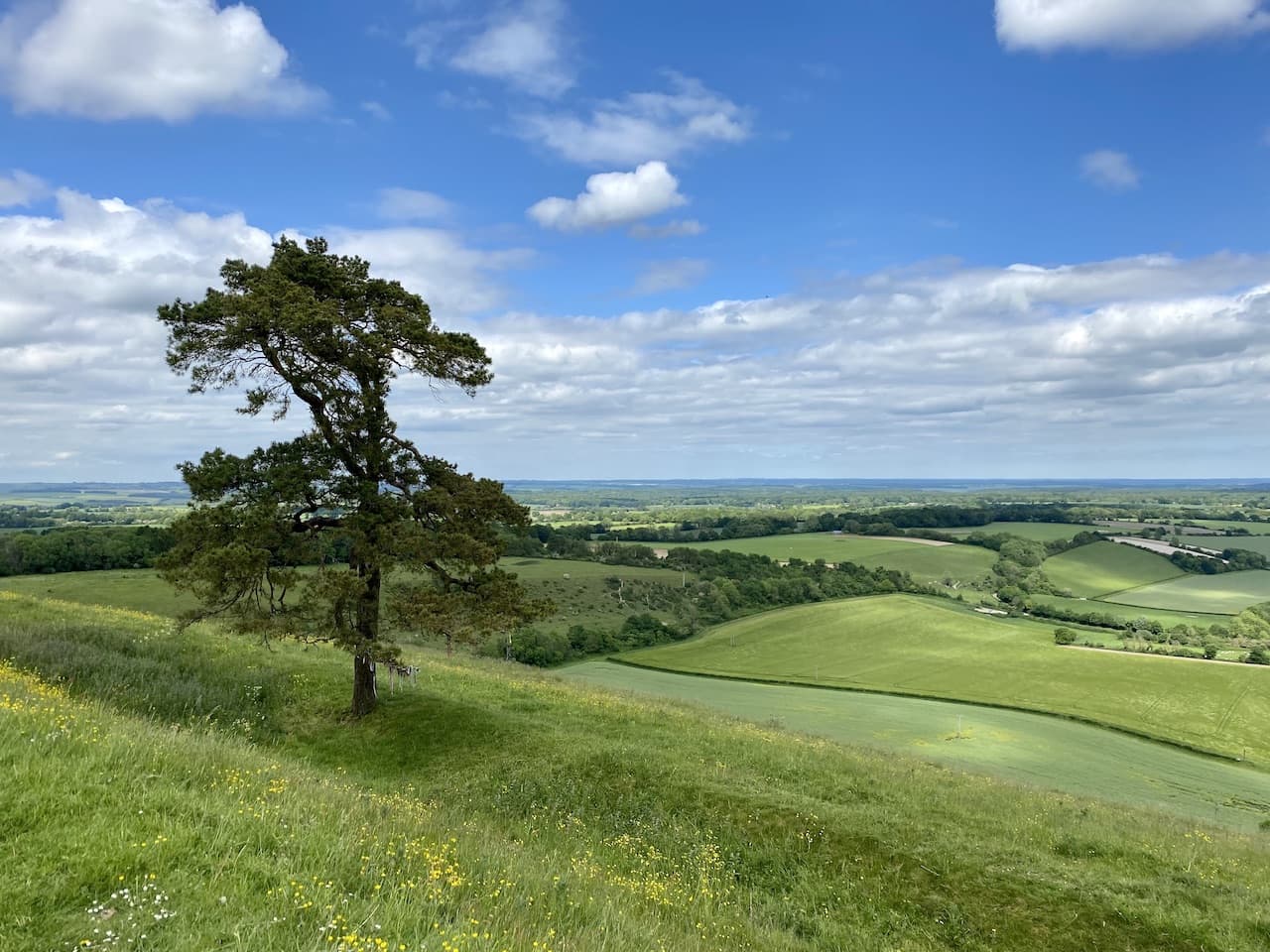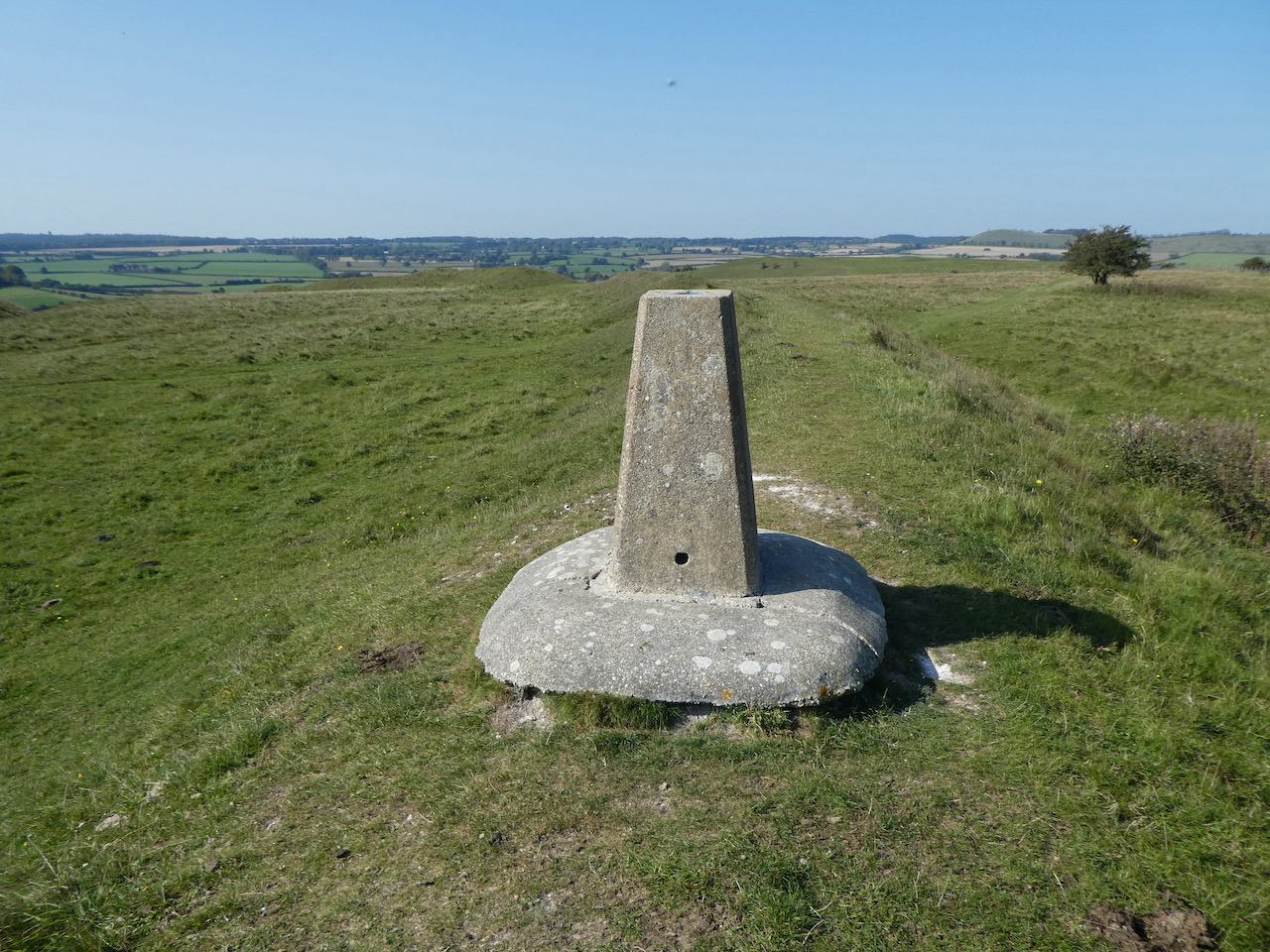For a while now my walking buddy Mandy and I have been discussing walking the perimeter path around the Imber Range on Salisbury Plain. It is a long walk of over thirty miles so we have been waiting for a day when the weather forecast is set fair. I don’t mind walking in the rain, but it is uncomfortable wearing waterproofs for hours on end in the summer.
We plan to start from Tilshead and are dropped off by Mandy’s husband ,Stuart outside the Rose and Crown Inn (SP3 4RZ) in the centre of the village beside the A360. The beauty of starting from a pub means there is an opportunity for a pint at the end of the walk. After walking over thirty miles I will be ready for one!

Leaving the pub we cross the road and turn left following the pavement besides the A360 and just after passing Ash Tree House take a footpath on the right which leads between properties and then becomes a tree lined path.

At a junction of paths we turn left and soon reach the Imber Range Perimeter path, here we have the option of going clockwise or anti-clockwise on the circular walk around the range. We opt to go clockwise so continue to head south on a grassy path.

On reaching a junction with a track we turn right and head steadily uphill.

We soon pass the access land around White Barrow and then at a fork in the path go to the right continuing up Copehill Down. There are a network of military tracks on these downs, but our route is straightforward keeping with the way-markers for the Perimeter path. On the summit of the Down we make a slight diversion by turning left to visit the Ordnance Survey Trig Pillar on Copehill Down, this is the 254th trig I have bagged.

Back on the Perimeter path we continue across a junction of footpaths and then pass houses that have been built for training the military.

Soon we head across another junction of paths and descend into the village of Chitterne.

On entering the village we turn right along a minor road following the suggested new route of the Perimeter Path which avoids walking besides the B390.

The lane we are on provides a good view of All Saints Church, parts of which date back to 1450 but most of it was rebuilt in the 1860’s. We would normally make a diversion to visit the church, but we have a full day’s walking ahead of us so don’t want to delay our progress.

At a junction of roads we turn left and then after a couple of hundred yards follow the way-markers on the right up a track running alongside old barns and then we keep going steadily uphill back onto the downs.

One of the benefits of walking a route like this is there are plenty of way-markers and we stick with these as the path goes over Breakheart Hill and then goes along a track at the boundary of the restricted area.

Soon we pass Quebec Barn and at a junction of paths keep heading west. To our right is the Knook Barrow OS trig pillar, it is one I have not bagged, but the red flags are flying on the range so it is not safe to visit.
The path joins a well-made track and then bends to head downhill towards East Hill Farm.

On reaching a minor road at East Hill Farm we turn left and follow the road heading towards Heytesbury. Shortly before reaching Heytesbury House we go right on a path which goes steadily uphill to Cotley Hill Woods.

After going through the trees we stay with the path over Cotley Hill.

We are now walking along a ridge heading towards Scratchbury Hill on which sits the Iron Age hillfort of Scratchbury Camp. After a gradual ascent we reach the camp and turn right to walk along the ramparts.

After Scratchbury Hill we drop down to a track and then head over Middle Hill.

Descending from Middle Hill the path leads to a track where we turn right and then soon left to start the steady ascent to the summit of the Battlesbury Hill. This was the location of another Iron Age hillfort. The 360 degree views from up here make it a good location for spotting enemies approaching.

Rather than walk around the ramparts we follow a well-worn path towards the centre of the fort where there is an Ordnance Survey Trig Pillar, my 255th bagged.

From the hillfort the way-markers direct us downhill to reach a minor road, Sack Hill, where we turn left and walk along the road, soon passing military barracks behind secure fencing. After the barracks we turn right into Elm Hill and pass the modern St Giles Garrison Church.
This is not the most attractive of places to walk but we know we will soon be back on the edge of the Plain. We follow Elm Hill to a junction keeping with the way-markers and turning left to follow a rural lane downhill to the driveway of West Wilts Golf Club. Our route turns right up the driveway and then forks to the right to follow a path besides a house before heading through trees to reach open countryside overlooking the wonderfully named Kidnappers Hole.

Apparently this was the site of a chalk pit used in the lime kilns. I have been unable to find out why it is called Kidnappers Hole, but in researching I did find reports of UFO sightings here in the 1960’s.
To our left is the West Wilts Golf Course, this is a course I have never played and it is now so long since I last picked up my clubs, I doubt I ever will.

As well as being the route of the Imber Range Perimeter Path, this is the route of the Wessex Ridgeway, a long distance path travelling 138 miles between Marlborough and Lyme Regis.
At a junction of tracks we turn to the left and head north to stay with the Imber Range Perimeter Path. There are cracking views in front of us and we can clearly see the path on the horizon a mile away. There is a good stretch of downland walking before we get there.

After passing a barn in a hollow we leave the track to go through a gate on the right following the Imber Range path signs. The path drops into a hollow and then ascends steeply up a chalk escarpment. It is a warm day so as we near the top we stop to admire the view behind looking back across where we were twenty minutes ago.

After a kissing gate we turn right along a well-made track following the Imber Range Path signs. The route has now joined the Mid Wilts Way, a sixty-eight mile long distance path crossing Wiltshire between the village of Ham, on the Berkshire border, and Mere on the Somerset border.

We continue in a northerly direction passing a massive chalk quarry. Permission for this quarry was granted following a ministerial decision in 1947, over the years it has expanded massively. The chalk extracted fed the nearby cement works in Westbury.

We pass the perimeter of the quarry and join a path besides the road leading to a car park. As we proceed we get a good view of the Westbury White Horse.

There are a group of paragliders on the edge of the escarpment waiting for the correct wind conditions to launch themselves off the side of the hill. It is a pastime that would not suit me, I am far more comfortable with two feet on the ground.

Near the car park we take a slight detour on a path to the left which has benches overlooking the valley. This is a cracking spot for us to have lunch and the nearby toposcope provides details of the points we can see in the distance.

Refreshed from lunch we return to the track and pass the car park and then turn right to reach the barns of White Horse Farm and then left along a wide stony track.

We are now over twenty miles into our walk, but still have ten to do. The track enables us to make good progress and there is no delay in identifying our route. It is straightforward. We just keep the boundary of the range to our right. As we head along there are some cracking views.

The track leads to the entrance road to Imber village. From the late 1800’s the War Office had been purchasing land on Salisbury Plain for military training. By 1920 land close to Imber village was being purchased and farms around the village were gradually acquired for military use.
On the 1st November 1943 the village residents were called to a meeting and informed they had 47 days to move out, the village was required for training for the Allied Invasion of mainland Europe. All 150 villagers left their homes for what they thought was a temporary move. Some even left tinned food in cupboards ready for their return. Unfortunately, they were never allowed to return to their homes apart from a brief annual visit when the Ministry of Defence enables public access.

Our route continues along a stony track, we are now getting a bit bored of walking on this surface. It made a pleasant change earlier but is becoming tedious, but at least there are good views to distract us.

The trail soon heads north towards Coulston Hill and then turns to the east leading us to the Ordnance Survey trig pillar on Stoke Hill, our third trig of the day and my 256th.

Shortly after the trig we pass another area constructed for the military to practice urban warfare.

The track heads towards the A360 and shortly before reaching the road we turn right just after passing barns and head south along another track until we reach a way-marker directing us left between fields. It is good to be walking on grass again.

At a junction of paths we turn right and follow the path across Lavington Down.

On reaching a minor road we turn left and walk through trees to pass an impressive, brick water tower apparently this is all that remains of a military camp on this site.

Emerging from the trees we see Tilshead below us, we have just a mile to do and are both relieved that it is downhill all the way.

On entering the village we head back to the Rose and Crown and are soon sat in the bar rehydrating on beer. After thirty-two miles the first does not touch the sides. We are both pleased to have ticked off this walk, it has been on our list for a while and there is a good sense of achievement in completing it. My walking app shows that our walking speed averaged 3.2 miles per hour which is not too shabby over such a long distance.
You can view this 32 mile walk on OS Maps and download the GPX File Here
To follow my walk, you will need Ordnance Survey Explorer Map -OS Explorer – 130 – Salisbury & Stonehenge; and OS Explorer – 143 – Warminster & Trowbridge
24th June 2021
© Two Dogs and an Awning (2021)
All information on this site is provided free of charge and in good faith and no liability is accepted in respect of damage, loss or injury which might result from it. To the best of my knowledge the routes are entirely on public rights of way or within areas that are open for public access.
Walking can be hazardous and is done entirely at your own risk. It is your responsibility to check your route and navigate using a map and compass.




















































































































































